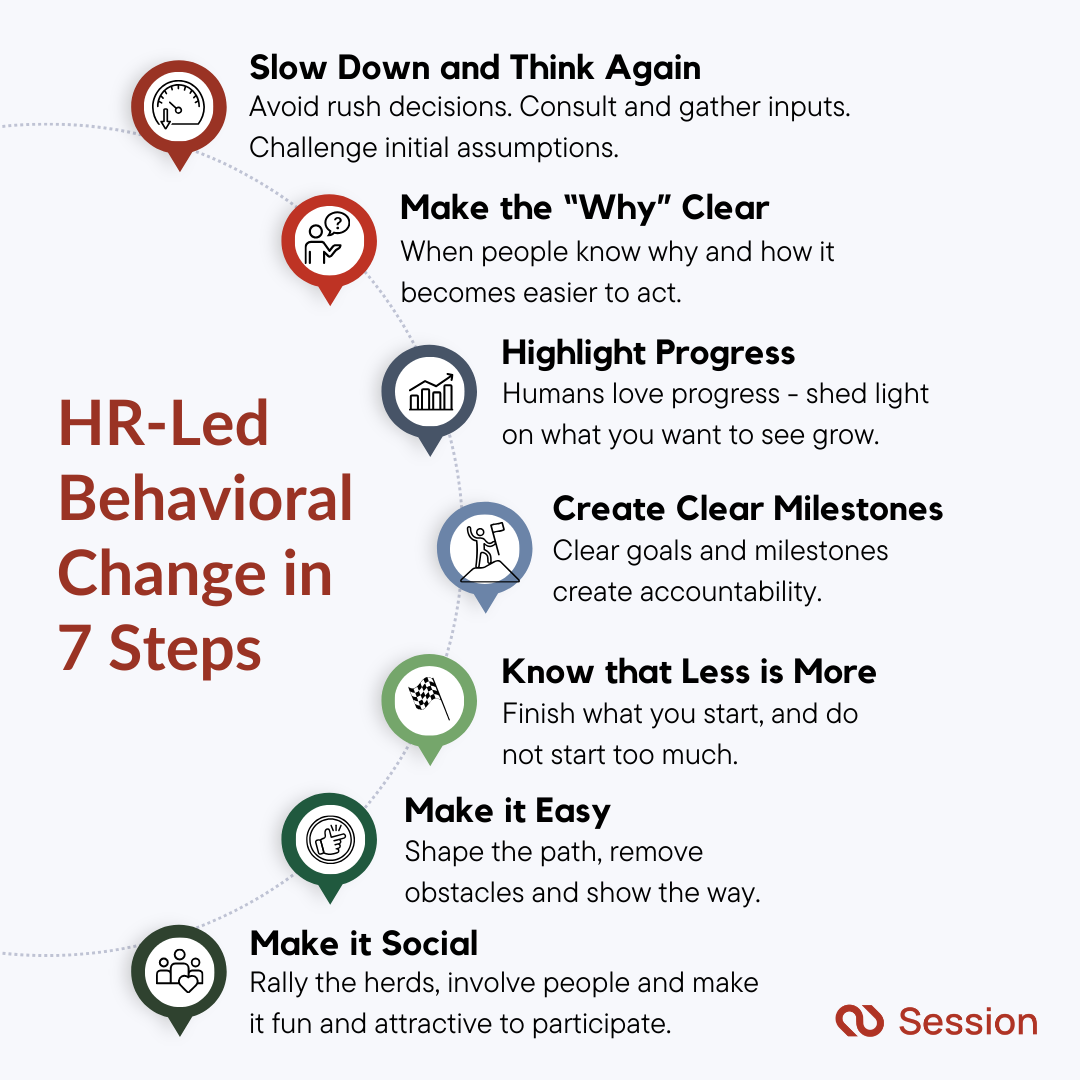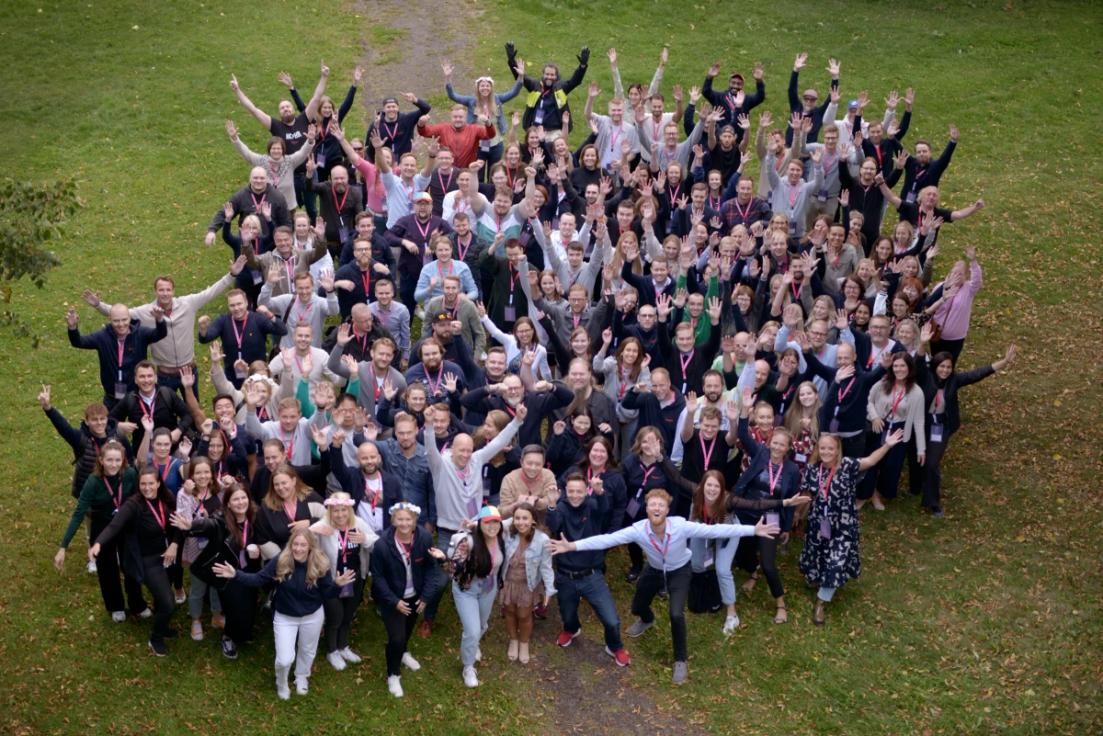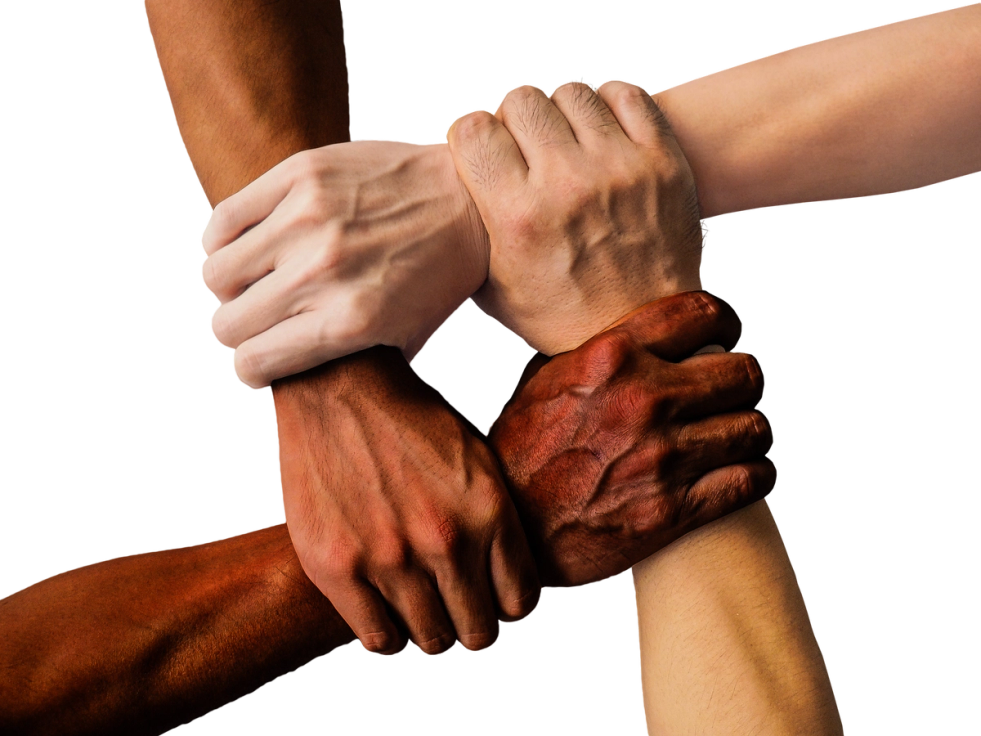Left to our own devices, us humans don’t always make great decisions or engage in positive behaviors. We sometimes overindulge, overspend, and often waste time on quick dopamine hits that make us feel good but aren't necessarily good for us. And while indulgences are a part of life, and something that should be enjoyed from time to time, problems arise when these indulgences dominate our lives and make it more difficult to do the things we need to do or reach the goals we would like to reach. Within a work context, negative behaviors such as procrastination, self-doubt, underperformance, poor decision making, confusion and lack of motivation can hinder our progress and affect the team and organization at large.
What if there was an anecdote to overcome less helpful or even negative behaviors in the organizational setting? In fact, there might be. It is called behavioral design, and it can help us make wiser process design and change initiatives, better decisions, as well as hinder biases in disrupting what is best for us and our organization.

In this article, I’ll talk about behavioral design, and how HR and management can employ it to introduce and implement organizational change and other initiatives in a way that positively impacts individuals and the company as a whole.
What is Behavioral Design - and why do we need it?
Behavioral Design (BD) is a systematic approach for applying behavioral insights to solve design challenges that center on human behavior. BD heavily relies on behavioral change theories, such as the distinction between personal, behavioral, and environmental characteristics as drivers of behavior change. Design for behavior change has been most commonly used in the areas of health and well-being, sustainability, safety and social contexts, and crime prevention. Today, it has expanded to reach organizations and corporations globally.
Organizational change processes frequently fail because they do not take the human factor into account. When implementing or initiating change, we do, however, need to take into account that human beings are not as rational or logical as we might think (or hope) they are. Instead, we make decisions based on our emotions, how hungry we are, or based on “what just happened” - very often without even knowing it. We are influenced by biases, also called “brain heuristics” which serve to save us energy by categorizing things for us so that we can make judgements and decisions easier and quicker. These categories, though, if left unchecked, might be full of flaws and misjudgements, like when we jump to conclusions about which candidate might be the best out of a pool of applicants, without noticing that the one we choose is the one that most resembles ourselves (the “in-and-out group error” based on the similarity bias). Or when we design a change process that is way too ambitious and lacks a realistic timeline, leading to delays, overspending, and lost trust by stakeholders due to an unharnessed overconfidence bias.
Therefore, we need to design interventions tailored to help human beings do the right things (and avoid doing the wrong things!) in our organizational settings, and this is where HR and management comes into the picture.
How to Change Things When Change Is Hard
Behavioral design in an organizational setting is not something that an individual can be held accountable to. Instead, change requires an approach where HR and leaders make it very easy, simple, fun, attractive and effortless to start acting in a way that is desired and hinder unwanted behavior and initiatives.
In the book Switch: How to Change Things When Change Is Hard by Chip & Dan Heath, many of the core tenets of behavioral change are described. I would seriously recommend HR and management to read this book to get a better and more practical grasp of behavioral change and how to successfully drive change in an organizational setting. But for now, let’s take a look at some of the core insights from the book.
In summary, Switch poses the following question: Why is it so difficult to make long-term changes in our businesses, communities, and personal lives? To explain this, the authors use the analogy of an elephant and a rider of the elephant:
- The Rider: This is the analog to our rational side of the brain. It provides direction and does the planning. This is the part of our brain where spreadsheets are born, where analysis happens, but also where we carve out the long-view visions.
- The Elephant: This is the analog to our emotional side as human beings. It’s instinctive and reacts strongly to pain and pleasure. The Elephant will go where it is fun or nice to go, and if it is fearful, it will stand still or run in a random direction. No matter how hard you speak to the elephant, when caught up in emotions, it will go its own way.
The Rider’s weakness is the tendency to over analyze and overthink things – spinning his wheels. When the Rider does this, the Elephant lacks direction and motivation - and change becomes hard. Change is only possible when both Rider and the Elephant work in tandem:
“If you want to change things, you’ve got to appeal to both. The Rider provides the planning and direction, and the Elephant provides the energy.”
The good news is, you can live in harmony with both the elephant and rider, if you balance the two entities. To do this, and to make change easier, you need to:
- Direct the Rider. Provide crystal clear direction. “What looks like resistance is often a lack of clarity.” In other words, if people go in the wrong direction or make the wrong decisions on a daily basis, what kind of information are they lacking? Have you clearly carved out what it is you want them to do - and why? The more direct and clear you can be, the better. Make it visual. Make it easy to SEE what needs to be done - and why.
- Motivate the Elephant. Engage the emotional side. As the authors of Switch put it, “What looks like laziness is often exhaustion.” You need to engage your employees' in a way that is appealing to them, play to their strengths, build on what they know and feel comfortable with, and you need to help them have fun while they work. This will make it easier for you to recrute, engage and motivate people to go in the direction you want them to go.
- Shape the Path. Create the conditions for both the rider and the elephant to excel. “What looks like a people problem is often a situation problem.” Within a work context, this means that you need to look at why people take the road they take. Very often it is because it is the easiest, the only visible way or what they have always done. To help people change, make it difficult to go or do things “the old way”, make it easy to do “the new thing”. And then gather the crowds so that people can follow one anothers examples.
By understanding the above facts, motivating the ‘’Elephant’’ (e.g. the employees’ emotional side) becomes easier and we can “nudge” people to do the right things.
Practical Steps to Help People Do the Right Things
Now that these facts have been established, let’s look at some practical steps you can take to best implement change and help your employees do the right things and avoid getting side-tracked by unconscious biases leading them in the wrong direction:
- Slow Down and Think Again: When making decisions, starting something new or changing things - slow down. Plan well to hang loose. If you rush things through in an organizational setting, the likelihood that you will make the wrong decisions are much higher. Gather inputs, challenge initial assumptions and viewpoints, consult with experts and don’t trust your gut - it is often false, especially if you are already under pressure.
- Make the Why Clear: If we know why we are doing, what we are doing (or supposed to be doing), change becomes easier. You can make it clear with numbers, pictures, videos, statements, spreadsheets - whatever it takes to make an appealing argument why change is necessary and what needs to be done. Remember, pictures often speak louder than words.
- Highlight Progress: Humans love progress — hence why civilization has innovated and created extraordinary feats, and continues to do so. Within an organizational context, highlight progress no matter how big or small. This might look like setting up a Slack channel to share positive news and accomplishments, or calling out individuals or teams for their contributions. As the authors of Switch put it:
“In situations where your team has embraced the right behavior, publicize it. For instance, if 80 percent of your team submits timesheets on time, make sure the other 20 percent knows the group norm. Those individuals almost certainly will correct themselves. But if only 10 percent of your team submits timesheets on time, publicizing those results will hurt, not help.”
- Create Clear Milestones: The human brain loves patterns and just about anything that we can easily make sense of. Creating concrete milestones is integral to behavioral design, as it engenders a sense of achievement and establishes a proactive plan for the future we can aspire to. It also makes it easier to communicate progress to internal and external stakeholders, and hold people accountable.
- Less is More: Do not start too much or fill up people's calendars with too many things. Less is in fact more. The human brain cannot take in too much information, neither follow too many paths at the same time. Therefore - if you want change to happen, change less. Also, remind people what you are keeping - you are changing some, but not all. Usually, you keep 80 % and change 20% - but we often forget to communicate this in change processes.
- Make it Easy: Behavioral design and nudging is in its essence all about this principle. Removing obstacles, helping people do the right things, and setting in blockers making it difficult for people to do the wrong things. By shaping the path, showing the way, and showcasing right behavior, you make it easy to follow the examples and the new direction.
- Make it Social: We are social creatures, us human beings, therefore, if you want to change things - gather the crowds and make it social to take part of the change and do this “new thing” in your organization! Rally the herds and make it attractive to do the new thing - by having the pioneers (role-models, leaders, influencers, ambassadors, true culture-carriers - whatever you call them) lead the way. Point them out, gather them and ask for their inputs on how to get everybody on board.
Seeing Is Believing: Remember to Measure your Behavioral Design Interventions
One of the wonderful aspects of human behavior is that it can be measured, indicating whether or not people respond to behavioral-based design programs. Any lack of action should be interpreted as a signal that the direction has not been clear enough, or that employees have not had the right conditions to stay motivated, or that their accountability or ability need to be improved. HR and management should always keep an eye on the success of initiated programs and interventions.
Conclusion
Behavioral design is a tried and tested method that HR and management can implement to increase better decision making, positive behaviors and the likelihood of change initiatives to succeed. If you’d like to learn more about behavioral design, please check out our webinar, How Nudging and Behavioral Design can Help us Reach our Goals at Work, which includes a panel of experts discussing the topic in more depth.













